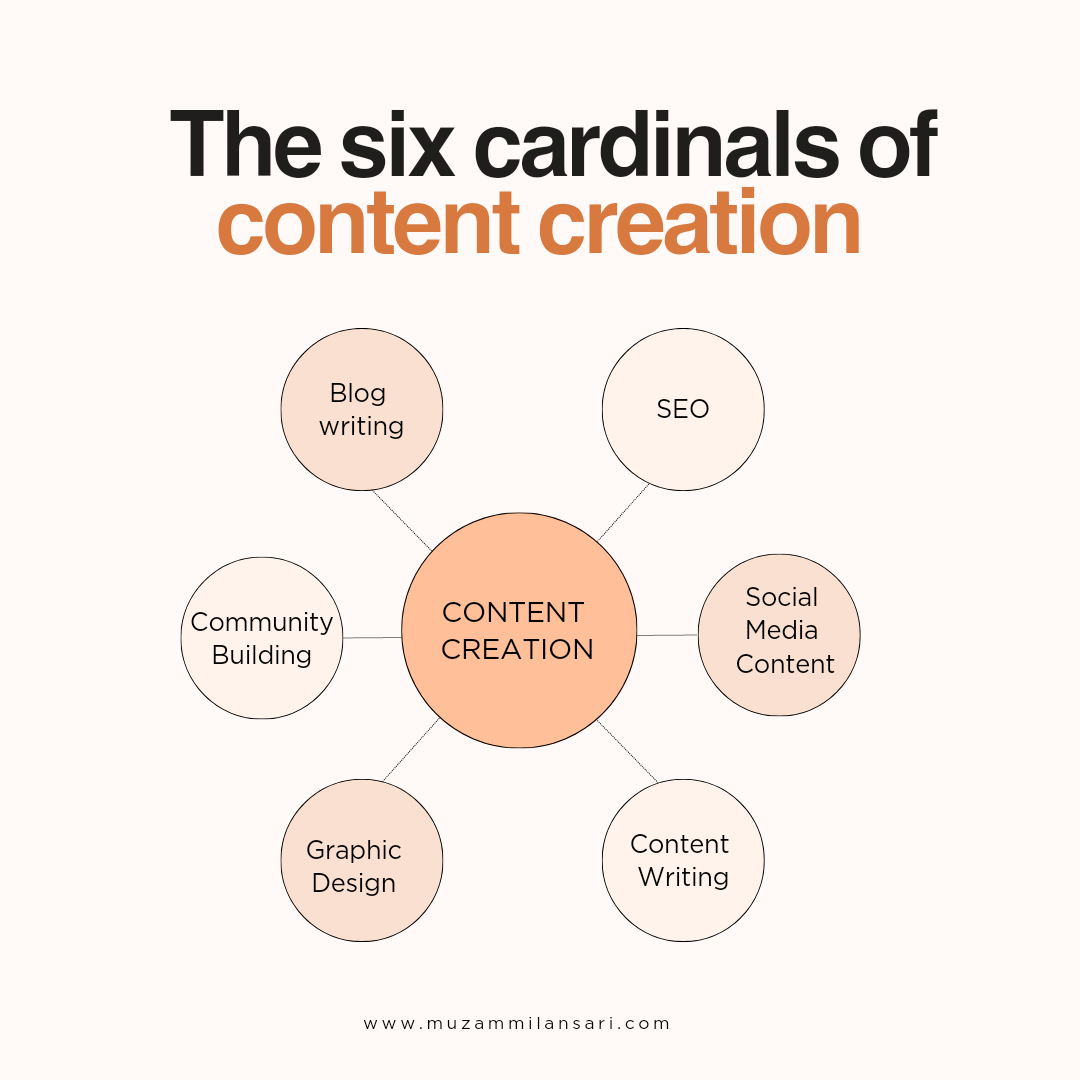Content Creation: A Guide to Crafting Effective and Engaging Content
Content creation is the process of producing information or material that can be consumed, shared, and interacted with by a target audience. This could range from blog posts, social media updates, videos, podcasts, infographics, e-books, to more technical formats like white papers or research reports. Content creation is fundamental in today’s digital landscape as it drives engagement, builds brand awareness, fosters community, and can establish authority within a specific niche.
Key Elements of Content Creation
1. Purpose and Audience Understanding your purpose and audience is the cornerstone of effective content creation. Every piece of content should serve a specific goal, whether it’s educating, entertaining, or persuading. Defining your target audience allows you to tailor your content to their preferences, pain points, and needs. This ensures that your content resonates and is meaningful, encouraging your audience to interact with it.
2. Content Strategy Before jumping into creating content, a solid strategy should be in place. A content strategy outlines the type of content you will create, how it aligns with your brand’s objectives, and where and how it will be distributed. An important part of this is the content calendar, which helps in planning and organizing content production. This ensures consistency and allows you to deliver relevant content to your audience at the right time.
3. Content Types There are various forms of content, and the right type depends on your audience, goals, and platforms:
Blog Posts: Informative articles designed to educate or entertain readers. They are useful for building brand authority and improving SEO.
Videos: Video content is highly engaging and easily shareable, making it popular across platforms like YouTube, Instagram, and TikTok.
Infographics: Visual representations of data or information, perfect for breaking down complex concepts in a digestible way.
Social Media Posts: Short, engaging snippets of content that drive interaction, often through visuals, hashtags, or storytelling.
Podcasts: Audio content is ideal for audiences that prefer listening over reading or watching, offering value in long-form discussions or interviews.
4. Content Creation Process The process of content creation involves several stages:
Ideation: This is the brainstorming stage, where you generate ideas based on your audience’s needs, trending topics, or industry insights. Tools like Google Trends, BuzzSumo, and social media can help identify popular topics.
Research: Once an idea is selected, research is crucial for ensuring your content is credible, accurate, and valuable. Use authoritative sources, data, and case studies to back up your content.
Creation: Whether writing a blog post or shooting a video, the creation phase is where your idea comes to life. Keep your audience in mind as you create. For written content, focus on readability, tone, and structure. For videos or podcasts, ensure clear messaging and high-quality production.
Editing and Optimization: After the initial creation, edit your content for clarity, conciseness, and engagement. For SEO purposes, optimize your content by using relevant keywords, meta tags, and internal links. Visually appealing content (images, graphics, etc.) can also enhance the readability and attractiveness of your work.
5. Distribution and Promotion Creating content is only half the battle; it needs to be seen. Distribute your content on platforms where your audience is most active. This could include social media, email newsletters, blogs, or podcasts. Additionally, repurpose your content for multiple platforms. For example, a blog post can be turned into an infographic for Instagram, a short video for TikTok, and an email newsletter. Using these methods increases your content’s visibility and reach.
6. Engagement and Feedback Engagement is the key to content’s success. Encourage interaction by asking questions, inviting comments, or providing calls to action (CTAs). Once published, track how your content performs using analytics tools like Google Analytics, social media insights, or specific platform metrics. Analyzing engagement will help you understand what works and what doesn’t, allowing you to refine your strategy moving forward.
7. Consistency Consistency in content creation is crucial to maintain your audience’s interest. Regular updates on blogs, social media platforms, or video channels keep your audience engaged and waiting for more. A well-thought-out content calendar can help maintain consistency without overwhelming your production process.
Conclusion
Content creation is both an art and a science. It involves creativity to engage and captivate, alongside a strategic approach to meet business goals and audience expectations. Whether you are a business aiming to boost visibility or an individual building a personal brand, effective content creation can be your most powerful tool in today’s digital world. By understanding your audience, refining your strategy, and focusing on quality and consistency, you can create content that not only stands out but also delivers tangible results.
